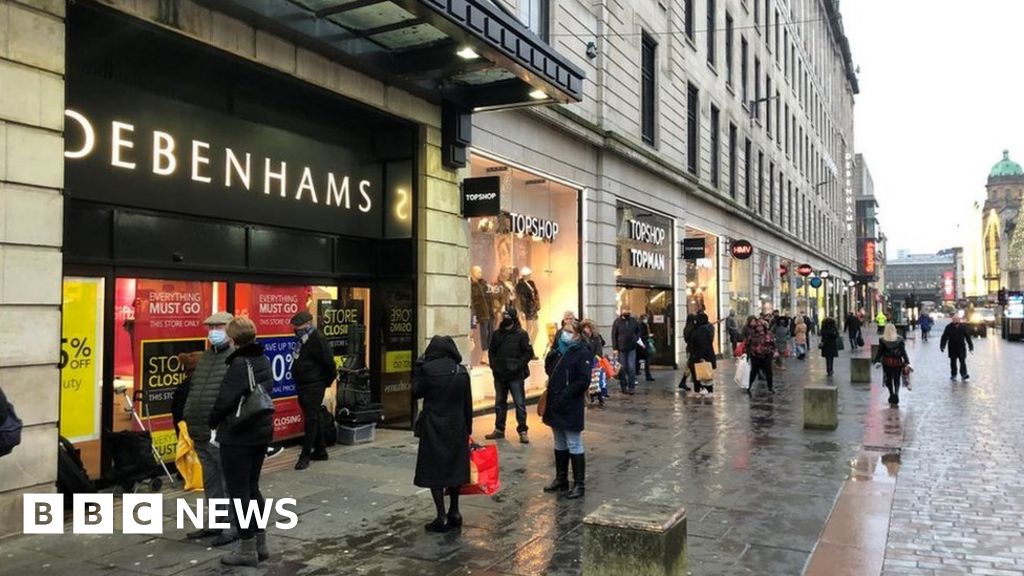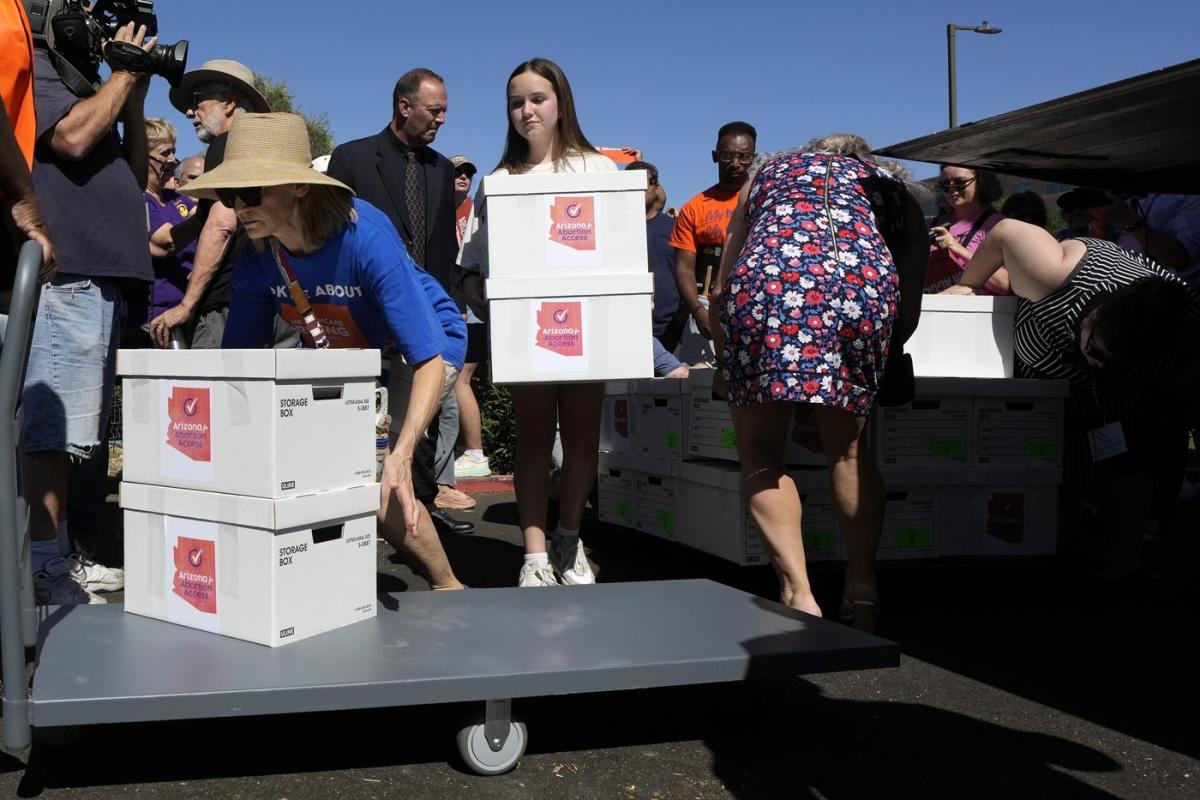Shopping
Glasgow looks to bring back more city centre living – BBC News

- By Douglas Fraser
- Business and economy editor, Scotland
The city of Glasgow is staking its future on three of its best-known streets.
Sauchiehall Street, Buchanan Street and Argyle Street will incorporate 1,350 new or converted flats under a new long-term vision for the city centre.
Councillors voted through the plan for the so-called Golden Z on Thursday.
Moving on from the dominance of shopping, the city centre could double its population in just 12 years.
At just 20,000, the number of residents in Glasgow’s city centre is low compared to other cities.
The council plan would boost the night-time economy, helped by more footfall from local residents.
And with the rebuilding of Glasgow School of Art, the plan is for culture and the arts to become a more significant part of city centre activities.
The council has already begun discussing possible developments with the many private owners of buildings on the streets. Little of the area is publicly-owned.
The council is also looking to Holyrood to legislate for further powers of compulsory purchase or compulsory sale.
Image source, ThreeSixtyArchitecture
The Golden Z was envisaged more than 40 years ago as the Style Mile.
As Glasgow suffered from the demise of heavy industry and sought a new role in the 1980s, this part of the city emerged as a national and international retail destination, which marketed itself as Britain’s best range of up-market shops outside London.
But retail has suffered from the challenge of internet shopping, so less floorspace is required. Change has also been accelerated by the pandemic.
The British Retail Consortium reported that footfall in Glasgow was down 7.2% in the year to June, more than it was in 10 other large British cities. Of those cities, Edinburgh had the strongest year-on-year growth, of 4.7%.
A report by property consultancy Ryden last November said footfall was 19% lower than it was pre-Covid, but with weekend and evening footfall up by 11% and 18%. Weekly and lunchtime footfall had recovered to 84% of pre-Covid levels.
Glasgow has been hit by the closure of multiple chains, most recently including Paperchase, and department stores. The city has lost Debenhams and TJ Hughes on Argyle Street, as well as Marks and Spencer, BHS, Dunnes and Watt Brothers stores on or near Sauchiehall Street.
Prominent sites lie vacant, including the former HMV shop close to the Glasgow Royal Concert Hall. The area of Sauchiehall Street close to the Glasgow School of Art has been hit by demolition work following the fire that destroyed that architectural masterpiece.
On Buchanan Street, the former Borders Books store has been undergoing lengthy renovation and Rogano, a long-established icon of Glasgow’s upmarket hospitality trade, lies empty.
The two major shopping centres which anchor the junctions on the Golden Z – Buchanan Galleries to the north and St Enoch’s to the south – both face demolition and rebuilding with a broader mix of uses.
However, the plan that went before city councillors emphasises that it is not assuming these planning applications will be approved. They are criticised on the grounds of a high carbon impact of rebuilding, rather than re-purposing existing spaces.
The plan, drawn up by council officials with three external consultancies, sets out to make the heart of Glasgow’s city centre more resilient, diverse and green.
It aims to have more links and use of lanes linking to neighbouring streets, while tying its appeal to less car travel and good communication links around it.
In seeking to boost the resident population, it says homes should be of various formats and tenures, including family, student and “later living” accommodation.
Around half the homes envisaged are seen as coming from refurbished and repurposed buildings, while half would be new-build, with many using space above shops on upper floors.
It highlights the need for community facilities including schools, health clinics and more parkland.
And while less conventional office space will be needed in the city centre, the plan foresees more flexible and agile workplaces.
It points to early gains from the strategy if there is a focus on the former ABC music and club venue next to the Glasgow School of Art on Sauchiehall Street; around the former BHS building, Watt Brothers store and former Victoria’s nightclub gap site; and the vacant TJ Hughes department store site on Argyle Street, near Trongate.
It also suggests developing a Sauchiehall Street cultural area.
Angus Millar, the council’s convener of city centre regeneration, believes the state of the main shopping streets “affects the way we see the city”.
“So it’s appropriate we have a focus on these three streets as we take forward wider regeneration of the city,” he said.
“It’s crucial we have a diversity of uses. We need more of a mix, a more sustainable mix, looking at retail but also food and drink, harnessing creative and cultural institutions we have in Sauchiehall Street, bringing them down onto the street and also more residential accommodation in these areas.”
Mr Millar said there would be backing for “meanwhile” uses, where buildings found temporary uses.
Outer Spaces is a charity that is seeking out such spaces for use by artists of all sorts. It already has 60 such short-term leases around Scotland, including the large vacated Marks and Spencer store on Sauchiehall Street.
Commercial property owners gain from charitable use, as it lowers the business rates bill, it means buildings are monitored and at least partly heated and in shopping centres, it creates a buzz of activity and creativity.
Svetlana Panova, the organisation’s spaces co-ordinator, told BBC Scotland News the charity’s intention was to put down roots for the arts in city centre regeneration, so that such creative uses are not expected to depart as soon as gentrification moves in and property valuations rise.
“We’re looking to play an active part in reinvigorating city centres all across the country,” she said.
“Artists need access to space that is central and exposes their practice to wider audiences and communities, and we’re trying to facilitate that.
“Our model is based on ‘meanwhile’ use, so we are looking to take over commercial spaces in between commercial tenants.”
Several of the arts charity’s venues will be open to the public during Open Doors days in September.
Valentine Quinio, an analyst with Centre for Cities think tank based in London, said many cities were facing similar challenges to Glasgow, and using similar strategies in response.
York and Bristol are seeking to boost city centre living and Canary Wharf in London, which was developed as a high-rise financial office district, is also looking for a new stage of development including homes.
“It’s about finding the right balance,” said Ms Quinio.
“More footfall can help businesses, and revitalise city centres, but it’s important to be mindful not to have too much residential, because this could eventually harm the city centre.”
Ryden’s report, presented to councillors last November, highlighted the challenge of around 400 obsolete small offices in buildings more than 60 years old. Many are in Victorian stone buildings which have been listed for their architectural significance, but which are expensive to refurbish.
A further part of Glasgow’s regeneration plan focuses on developing the riverfront. Known as the Clyde Mission, this was given a boost this week with additional funding from Holyrood. That comes with Scottish government moves towards a metro-region status linking the eight local authorities around the river.
The wider Glasgow city centre strategy, including the Golden Z, is to be published this autumn, followed by public consultation.





